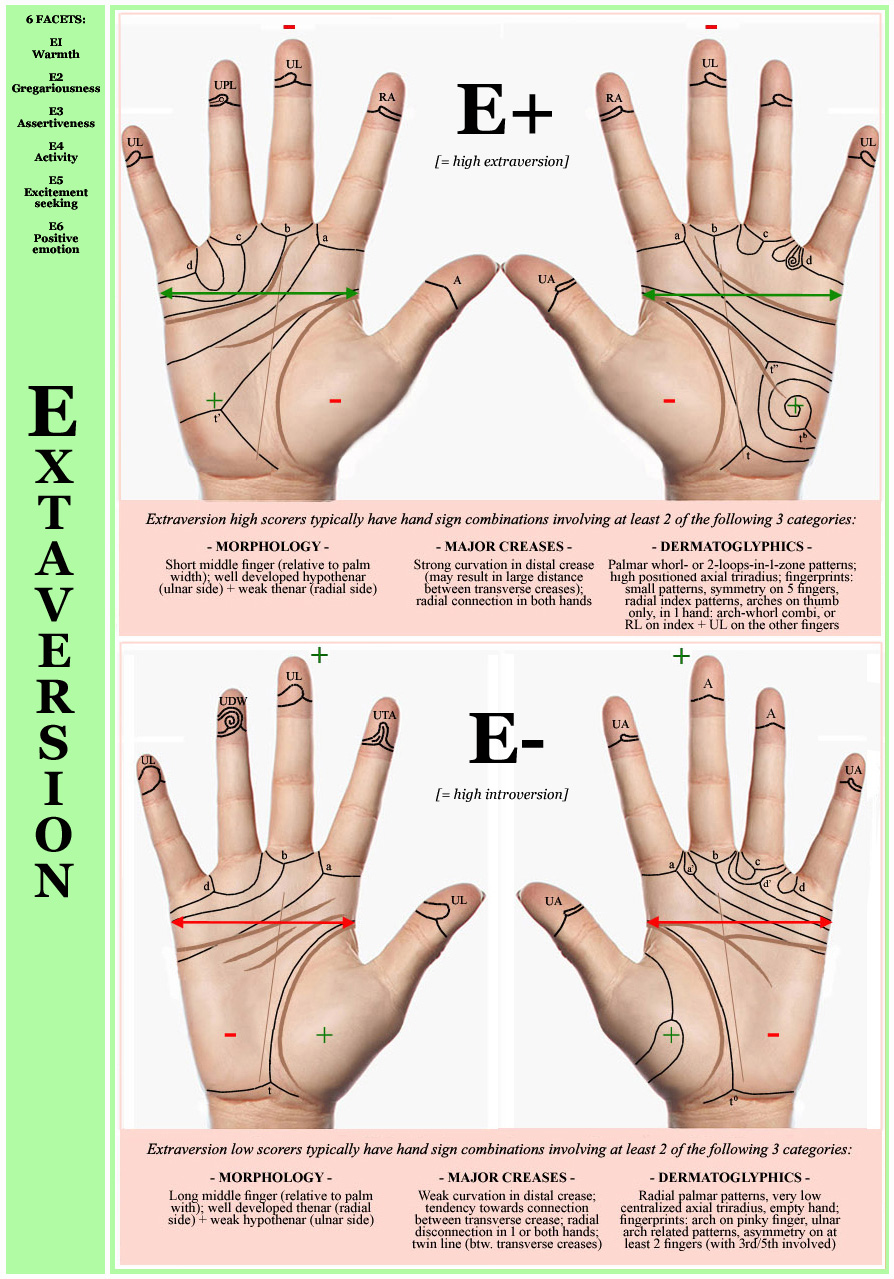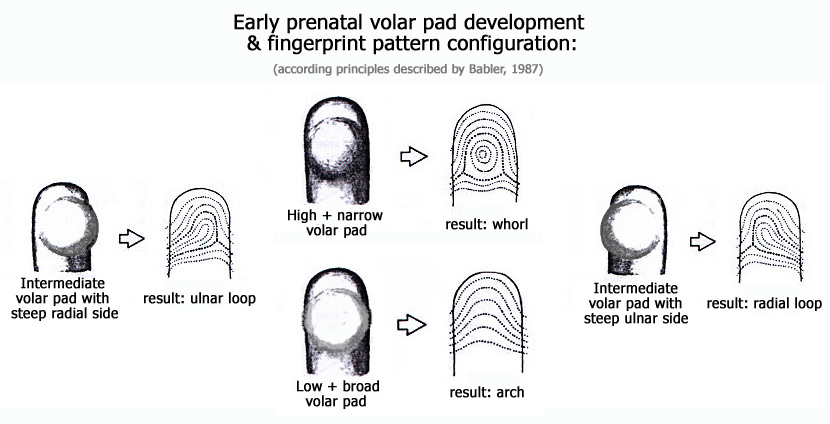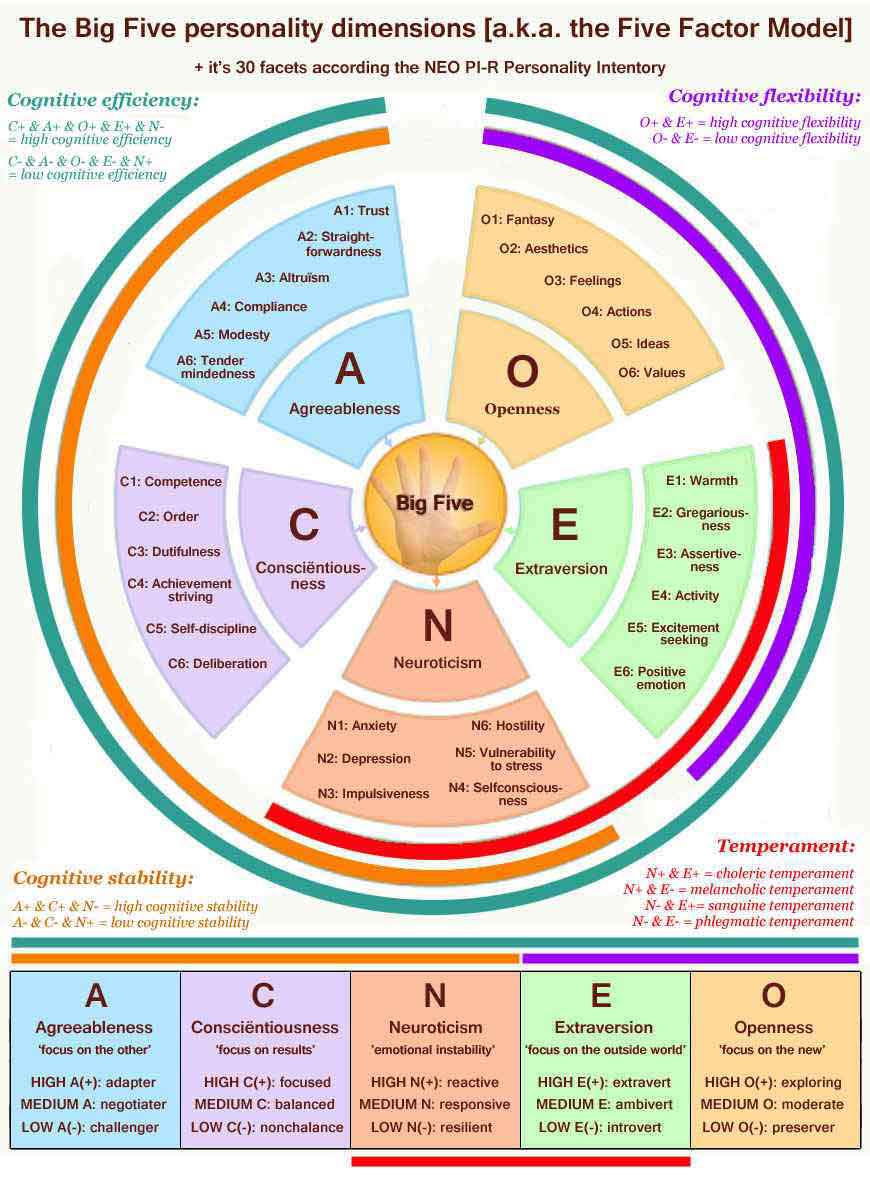|
- Published: januari 26, 2015 (last update: may 23, 2017) -
Phantom Pictures for the Hand
in Extraverts & Introverts: 7 hand signs!
After earlier reports presented strong evidence pointing out that 6 vertical hand factors are significantly associated with the Big Five personality dimension Extraversion-Introversion, new confirming evidence is reported here for a 7th vertical hand factor related to the dermatoglyphic patterns.
This latest finding made it possible now to discriminate all studied extraverts (N=28) from all introverts (N=21), and detailed phantom pictures for the hand now appear to make it possible to understand the underlying biological mechanisms involved!
In extraverts the typical hand signs show a relatively high activity inside the ulnar side of the hand (= pinky side), plus a relatively low activity inside the radial side of the hand (= thumb side). This distribution of activity had earlier been reported to be significant at multiple levels of the hand involving finger length, palm shape, major palmar creases, and one single aspect of the dermatoglyphics; now the distribution of dermatoglyphic patterns covering almost the full hand is added. In introverts the typical hand signs show the opposite tendency: relatively high activity inside the radial side, plus relatively low activity inside the ulnar side.
Phantom pictures are presented below, and the sequence of this article has the purpose to highlight the significance of the underlying research findings and the biological mechanisms, involving e.g. the dermatoglyphics (fingerprints) and the prenatal volar pads.
NOTE: High resolution version of picture below for the hand in Extraversion (+ introversion)
is available HERE.

A 100% success-score for the Dutch population
based on 7 vertical hand factors
The histogram presented on the right represents the regression-result based on the 7 vertical hand factors combined (where the dermatoglyphics patterns together represent the 7th vertical hand factor, more details are presented in the next paragraph) - large version of the histogram is available HERE.
The new hand model produced a 100% success-score for the full Dutch population [N=48], which implicates that all 28 extraverts got separated from all 21 introverts.
Contrary to the previous report (march 2014) it became no longer necessary to separate first the males from the female, nor the use of any type of control-mechanism.
The IBM SPSS Statistics 21 produced the following extraversion-hand factor regression formula:
|
|

|
Linear regression analysis result for Extraversion = 7,040 - (4,152 x A) - (6,752 x B) - (1,429 x C) - (0,163 x D) + (0,195 x E) + (0,056 x F) + (0,552 x G)
A = finger length to palm width ratio [sig. = 0.026];
B = triradial ab vs. ad ratio [sig. = 0.000];
C = twin line between transverse lines (= between the head line + heart line) [sig. = 0.011];
D = proximal transverse line (= head line) connection / disconnection [sig. = 0.103];
E = distal transverse line (= heart line) curve / simian line [sig. = 0.042];
F = hypothenar vs. thenar ratio [sig. = 0.080];
G = dermatoglyphics patterns sum [sig. = 0.000].
NOTICE: sig. describes the level of significance for each individual hand factor; it is especially interesting to notice that those details indicate that the 2 hand factors that relate to the dermatoglyphics (B & G) have the highest weights in the results.
Earlier reports:
Extraversion hand chart 2014 - Extraversion, 2d:4d digit ratio & hand shape - Extraversion: 6 hand signs -
The biological mechanism behind the dermatoglyphic patterns!
In order to understand the above presented research results more properly it is especially useful to be aware that dermatoglyphic patterns reflect prenatal development of the volar pads, with arch patterns (where 'true patterns' such as loops en whorls are missing) representing low volar pad development (see picture presented below).
This implicates that the distribution of arch patterns and 'true patterns' provide some insight in which parts of the hand were most active during prenatal life (at the stage where volar pads become manifest).
Early prenatal volar pad development predicts the fingerprint pattern configuration.

|
|
The human palm is commonly known to show a clear tendency to have 'true patterns' at the ulnar side of the hand: most common is a loop in the palmar zone between the pinky and ring finger; however, inside the radial part of the palm 'true patterns' are usually missing. This distribution of could represent sort of a counter-balance for motoric activity of the hand (as the fine motorics are more well developed in the radial part of the hand).
A likewise tendency is found in the fingerprints, because arches (read: missing of 'true patterns') are most commonly found on the index finger, and arches are least common in the pinky- and ring fingers.
Interestingly, this natural distribution of 'true patterns' (read: loops or whorls) towards the ulnar side of the hand. |
|





